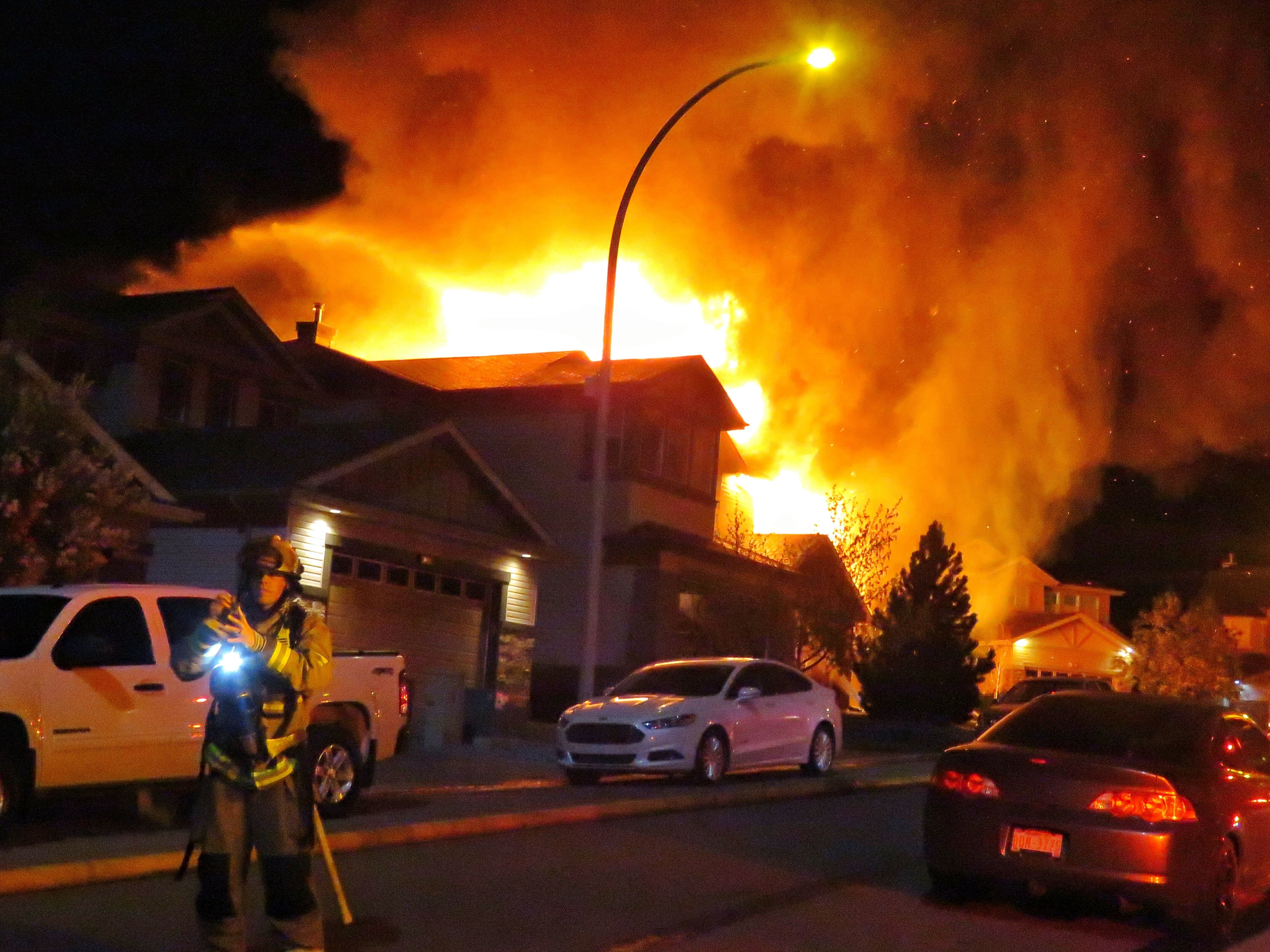Common Causes of Winter House Fires

Is your home a fire hazard? That’s a pretty loaded question and most of you have no idea where to even begin assessing your home to answer it. For millions of us, we’ll be snuggled up in front of the fire for the majority of our winter evenings. While spending time at home in the bliss of our own company or the company of our loved ones can be wonderful, it can also put you at increased risk of falling victim to a house fire. It’s no wonder why – our thermostats are on at higher temperatures, we’re cooking more frequently, we’ve got the fireplace going, and many of us have Christmas lights up. It’s safe to say that our homes are pushed to the brink during winter.
So, how do we safeguard ourselves, and our loved ones, from a potentially deadly house fire?
Better Not Light the Runway for Santa’s Sleigh
Every winter, 770 homes across the United States will have some sort of fire incident thanks to poorly installed Christmas lighting. That’s over 40% of all Christmas-related fires. According to the National Fire Protection Association we are most likely responsible for many, if not all, house fires that occur during the holidays. It’s important to get rid of old lights with bulbs that aren’t working correctly or that have damaged wiring.
Christmas lighting can be such a beautiful sight and it’s tempting to go overboard with lighting up your home. If you can, try to opt for battery-operated lights. That way, you won’t be overloading any sockets in your house. Electrical fires can be silent and deadly, so be sure to turn off all of your Christmas lights – battery-operated ones included – before you go to bed.
If you’re placing lights in your Christmas tree, make sure that the lights are in good working order, especially if you have a natural Christmas tree. As the tree decays, it will become dry and brittle, making it the perfect kindling to start a fire and carry a menacing flame.
‘Tis the Season to Eat!
From Thanksgiving to Christmas and even New Year’s Day, eating seems to be number one on the agenda of festive cheer. During warmer winter days, try to do some of your cooking outdoors. Not only will this save on electrical costs, if you run an electric cooktop and stove – but it will also help minimize the amount of time you spend in the kitchen and, thus, the risk of a kitchen fire. When cooking indoors, it’s imperative that you keep everything away from your cooktop that isn’t necessary for cooking. The only thing near that surface should be your pots and pans. It can take seconds for a roll of paper towels or an oven mitt to catch fire and, before you know it, your entire kitchen is up in flames. If you’re frying food in cooking oil, keep it to 320 degrees Fahrenheit for low frying, 356 degrees for moderate frying, and 374 degrees for high heat. Do not go above that temperature in your kitchen and if you’re broiling a turkey, take it outdoors. Make sure it’s an open enough area to prevent a potential fire from spreading. To make sure you’re on track with your temperatures, purchase a cooking-grade thermometer.
As an added safety measure, make sure that children are as far away from the cooktop as possible and that you are constantly wiping down any grease that might build up near the flame throughout the cooking process. Obviously, if you’re cooking on a gas flame, you should turn the gas off before attempting to wipe down the surface. Your cloth or towel could catch alight.
Carols by Candlelight
Candles are a go-to for many of us, not only do they add a warm and welcoming glow to our homes, but today’s varieties can add exceptionally festive aromas to any household. They’re also great for freshening up the air in your house without having to use harmful aerosol products.
If stale odor is one of your primary concerns, you can forego candles as well as aerosols altogether. Reed diffusers are known to provide a more pungent and long-lasting scent to your home. More importantly, they come in a wide variety of scents. The plus side? There is no risk of burning your house down.
If you insist on having candles on in your home, be sure to put them out before you go to bed. Make sure the wick has stopped smoldering as well, or you could be in for a nasty surprise in the middle of the night.
Wash, Dry, Repeat
We use our washers and dryers all year long, but more so in the winter months. For those of you that prefer to air dry your clothes, this becomes virtually impossible in winter due to freezing temperatures and snowfall in certain areas. In steps our hero of the day, the humble dryer.
What adds fuel to the proverbial fire is the type of fabrics that we generally wear in winter: fleece, wool, and all manner of warm, comfortable garments. The problem with these types of fabrics is that they cause an unbelievable amount of lint buildup in both our washers and dryers.
Try to clean out the filters in your washer and drier every time you use them during winter months, but most especially your dryer. Go the extra mile and get a professional to come in and clean out the ventilation or ductwork that leads in and out of your dryer.
There’s no need for this wonderful time of year to end in tears and destruction. Take the precautionary steps now so that you can save yourself hundreds of thousands of dollars in damages and unnecessary heartache.




